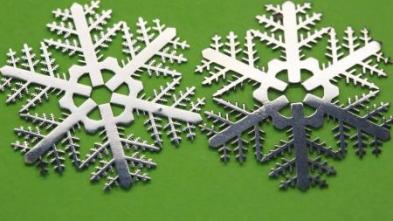Nanofabrication Done More Precisely

With a process known as thermomechanical nanomolding (TMNM), a team of researchers has developed a highly precise method of nanofabrication.
 The team, led by Jan Schroers, professor of mechanical engineering & materials science, has developed a technique in which they can take a material and use TMNM, controlled by diffusion, to create nanowires of single-crystal structures. These can be used to make nanowires with great precision of essentially any material.
The team, led by Jan Schroers, professor of mechanical engineering & materials science, has developed a technique in which they can take a material and use TMNM, controlled by diffusion, to create nanowires of single-crystal structures. These can be used to make nanowires with great precision of essentially any material.
“For the next level, if you want to create devices, you typically need to combine materials,” Schroers said. The new method, recently described in Science Advances, does just that.
They found that by changing the temperature of the material, the researchers can “squeeze” one of the materials to the surface. For instance, if there’s a compound material containing copper and silver, the procedure can rearrange the order in which the materials are present. This essentially creates a whole new toolbox to work with.
“Some materials are by nature difficult to mix, but they do mix during this process - so we take unmixed materials, and they mix themselves,” Schroers said. “It is a sort of self-regulating process - if you do anything on the nanoscale that you want to make useful, it has to be self-regulating. Otherwise, it’s too small and complicated to control.”
One application is for making catalysts, since the method is very effective at bringing precious metals to the surface of the material. Gold and palladium, for instance, are excellent catalysts but also extremely expensive. But since the catalytic reaction happens only a few nanometers into the surface, the precious metals only need to be on the surface while a cheaper metal can make up the bulk of the material.
“So you can have these batteries and electrodes and you can make them essentially out of a minute fraction of a precious metal,” he said. “The rest could be copper or nickel, and your electrodes would be dramatically cheaper.”
Guannan Liu, a graduate student in Schroers lab, and co-lead author of the study, said the method can be broadly used, since the diffusion mechanism is present in essentially all solid materials. Hence, materials such as topological insulators and other so-called quantum materials can be readily fabricated in a precise and controllable manner.
“So we can apply this method to a very wide range of materials and then we can fabricate them in different length scales and different material combinations,” he said. “For example, you can do heterostructures and combine two or three different materials together. This is a very powerful tool and can enable a lot of structures and potential applications in nano, electronics, and plasmonics.”
Naijia Liu, co-lead-author and also a graduate student in Schroers’ lab, noted that the method makes it much easier to create structures of more than one material, which requires the sharp separation of layers and precise control of layer sequences.
“In TMNM, atoms are driven by pressure gradients to layer up nanowires, providing the possibility to move different materials separately,” he said. “This inspires us to consider realizing heterostructures through controlling atomic transportation from layered feedstocks."

